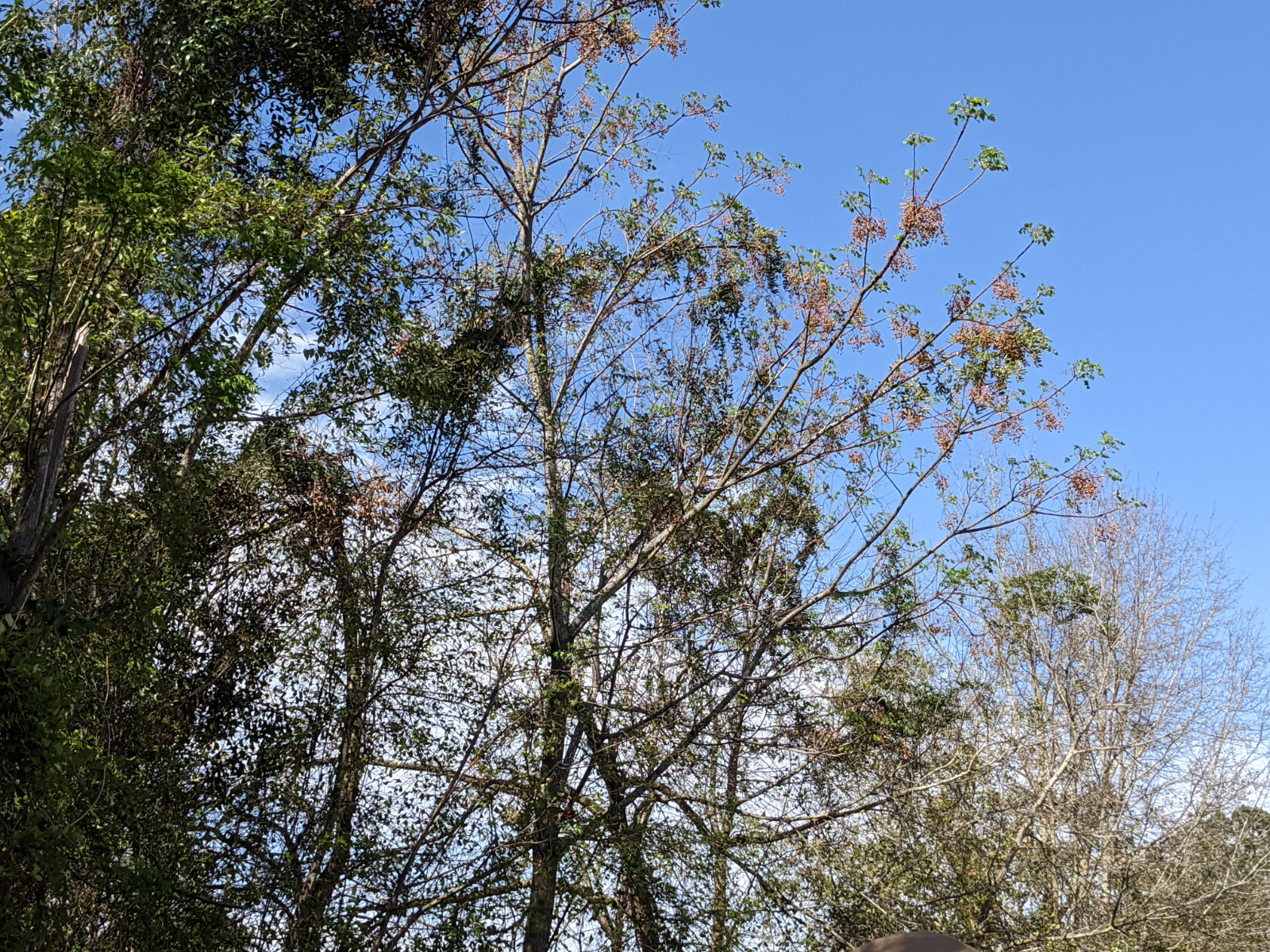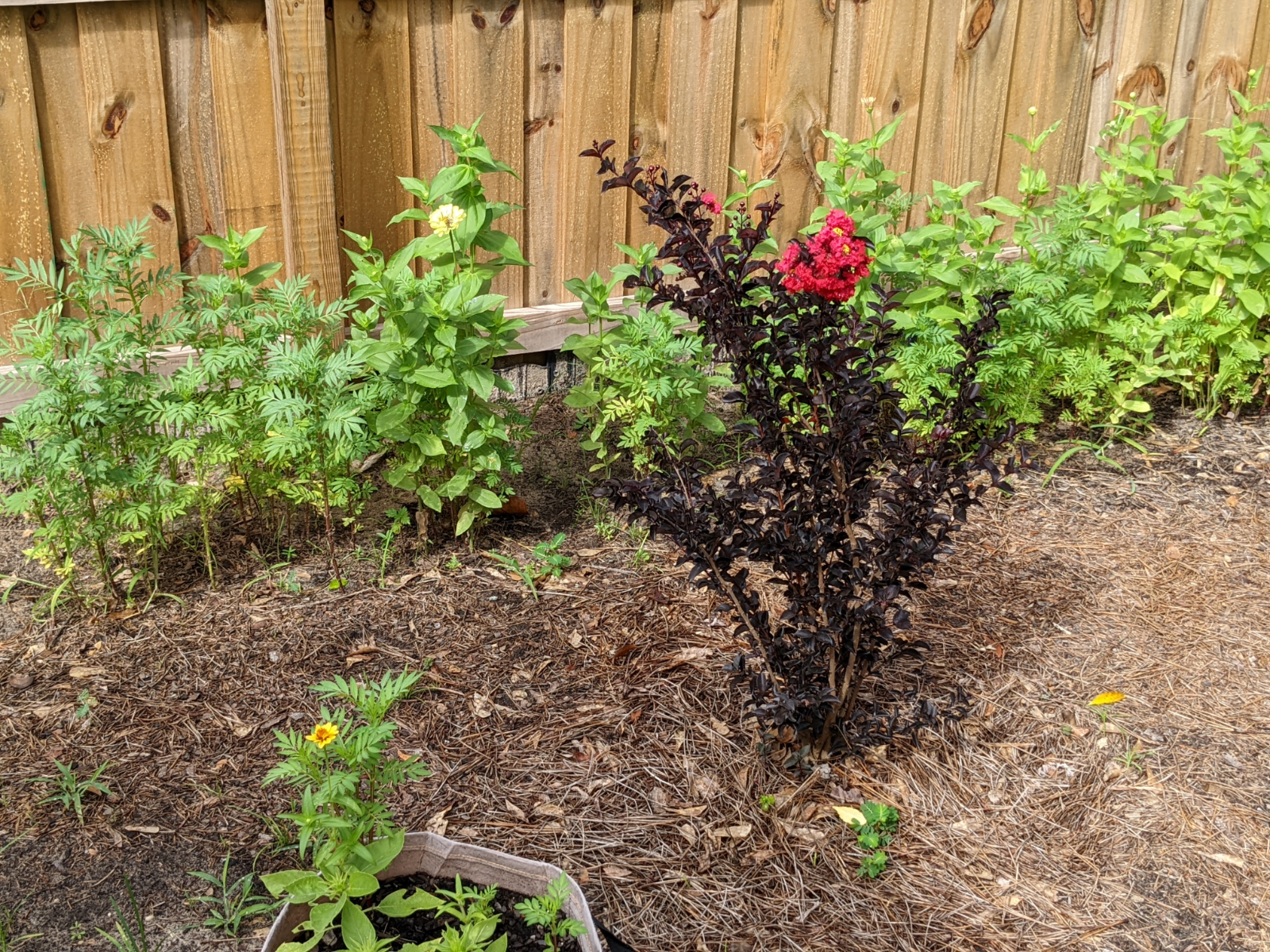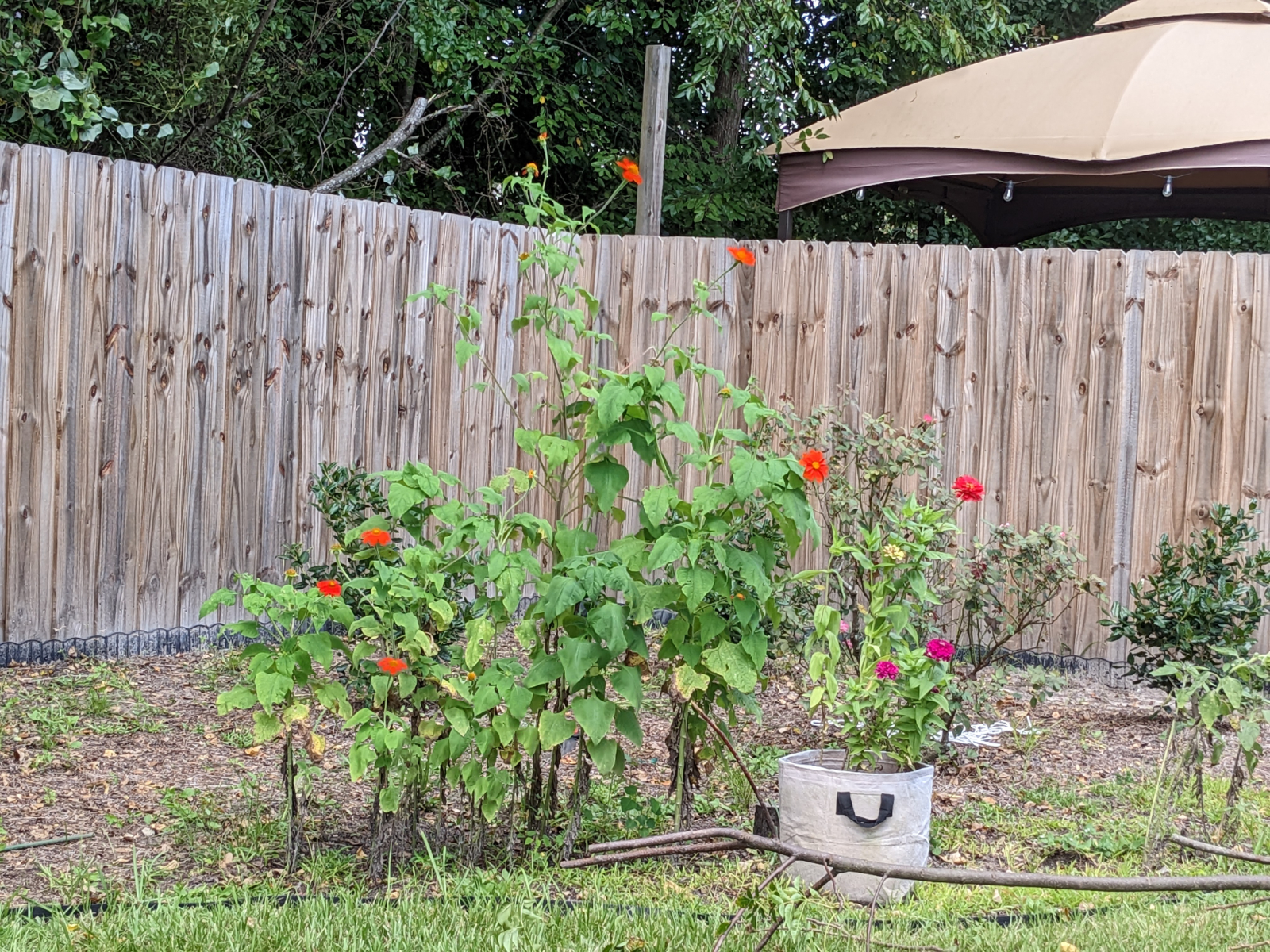We don’t have the largest backyard, but it’s a good size for us. After our place in O’Fallon, with the steep hill in the back, we were excited about a nice flat backyard when we bought the place.
We spent considerable time yanking out the pampas grass that had been allowed to spread until it knocked down fences. We also gave the backyard shed to our neighbors. We used weed fabric and edging to carve out garden areas for fall planting. We planted six Nellie Stevens holly trees, three to each corner, and stunning Black Diamond red crape myrtles, one on each side. We then covered the dirt areas with about 20 bales of pine straw.


We bought the place in summer. It was the next Spring when we discovered the chinaberry trees. One day we woke up with thousands of small yellow berries littering the ground. We’d clean them up only for them to rain down again during the next breezy day.

Behind us a buffer zone between HOA property and a small church. When the area was cleared, the HOA did not do a proper job of controlling the growth in a stand of trees, which allowed invasive chinaberry trees to take over. Chinaberry trees grow quickly and the ones next to our property are now about 30 feet tall. Their branches extend over our yard, and all of the branches were filled with berries.

We had pruned the smaller trees ourselves, but the problem with chinaberry trees is when you cut one branch, a dozen grow in its place.
Chinaberry trees are toxic. The berries are toxic, the bark is toxic, and the leaves are toxic. Worse, they can alter the chemical makeup of the dirt, which can kill off any species that is not a chinaberry. They do have some pretty flowers in the spring, but these don’t compensate for the messy berry droppings.
These are nasty things. If you step on them, they form a gluey mess on your shoes that is almost impossible to remove. And where there’s a berry, there will be a chinaberry tree. Worse, they got into the pine straw mulch and the only way to get rid of them was to get rid of the mulch. Twenty bales of straw, gone.
This last year we planted sunflowers, zinnias, and marigolds in all of that exposed dirt and had some success with the zinnias, marigolds, and Mexican sunflowers, but the rest was a bust. So, lots of weeds. Lots and lots of weeds.


We asked the HOA to clean up the chinaberry trees, but they blew us off. They’re ‘healthy’ trees they claim, though in this city and county chinaberry trees don’t fall into the ‘keep the trees’ laws. We can prune the trees ourselves, but as I noted above: cut one branch, get a dozen in its place.
Now our plan is to convert the carved out garden areas back to grass—not to make it back into a lawn, but grass can form a good ground cover and it’s relatively simple to clean up the berries off of grass. Then we’re going to uncover patches for new bushes and trees, and use raised beds for any areas we want to reserve for annuals.
We can cover the raised beds with plastic during berry falling season, and use a shop-vac to vacuum up the berries on the grass. We’ll still be able to have the plants and flowers we want, without the weeds from bare ground and the chinaberry dilemma.
In the meantime, I found a terrific writing on the history of Savannah and the part it played bringing these nasty trees to the US.

